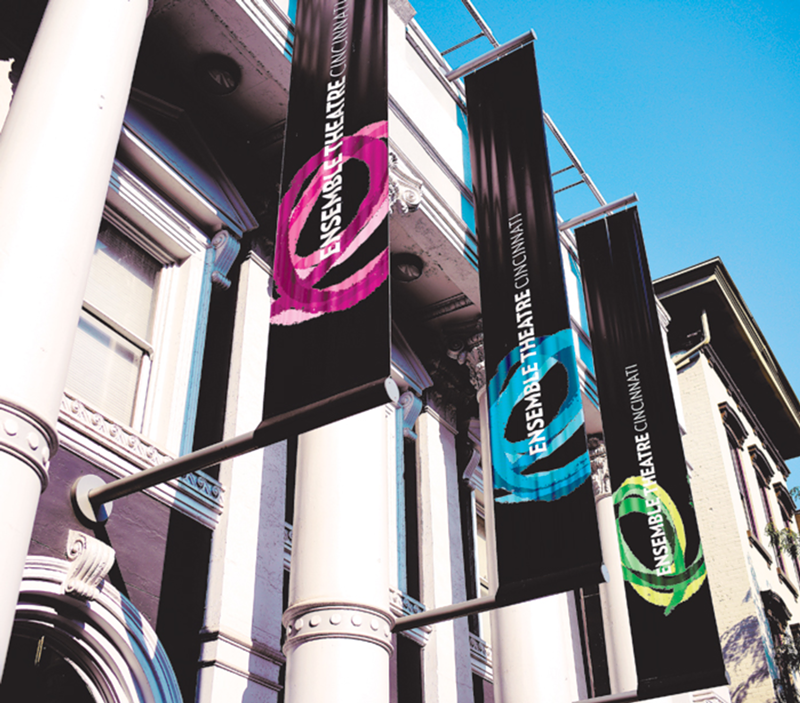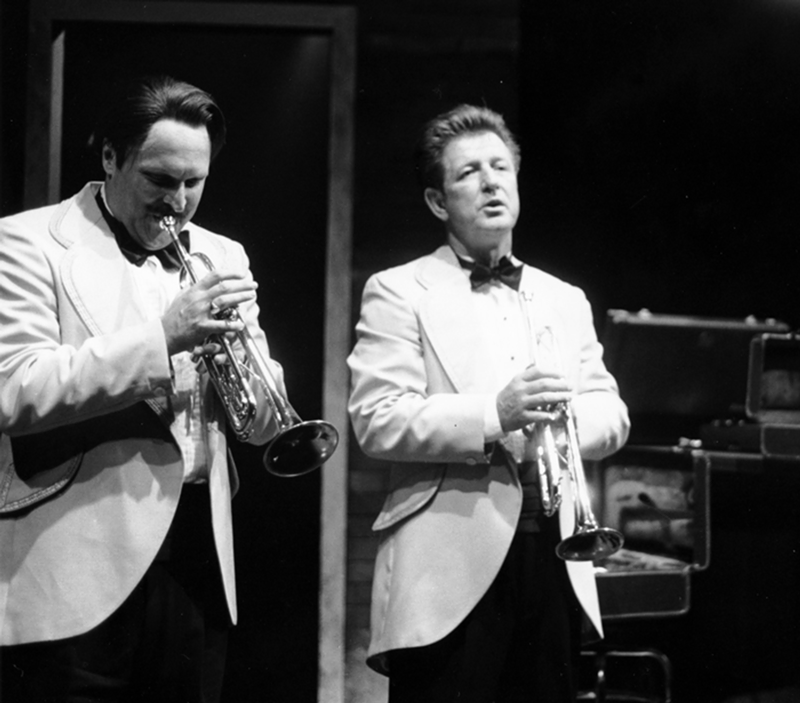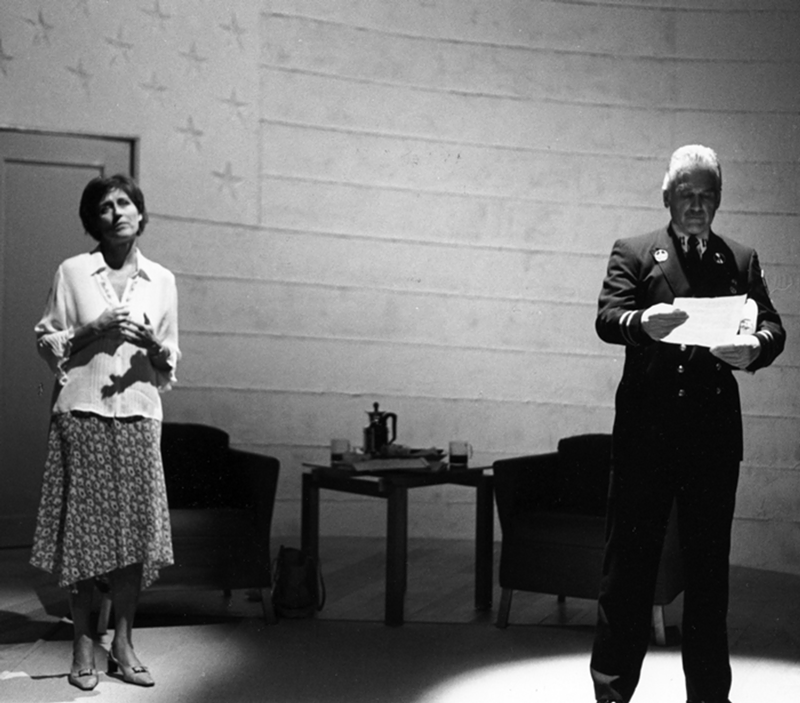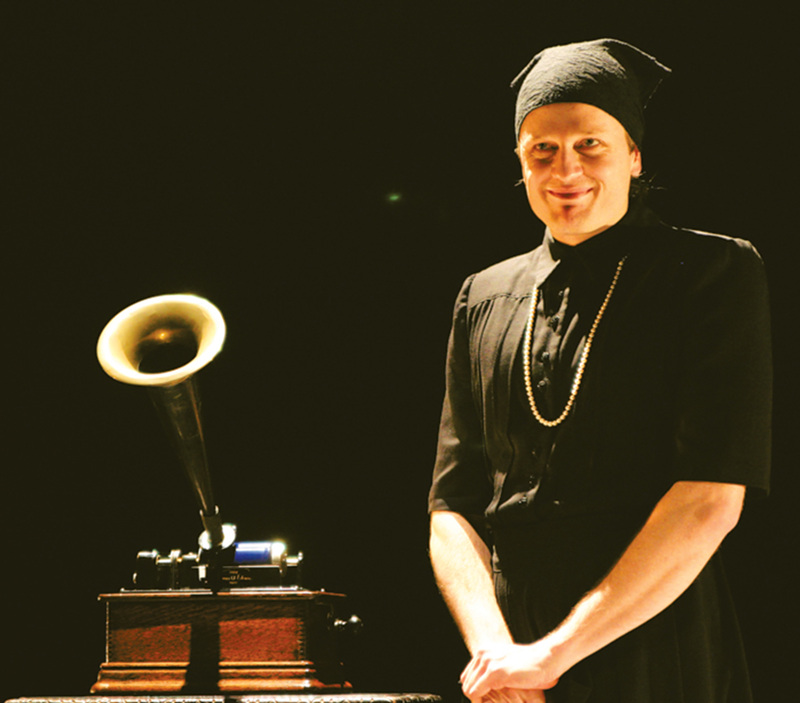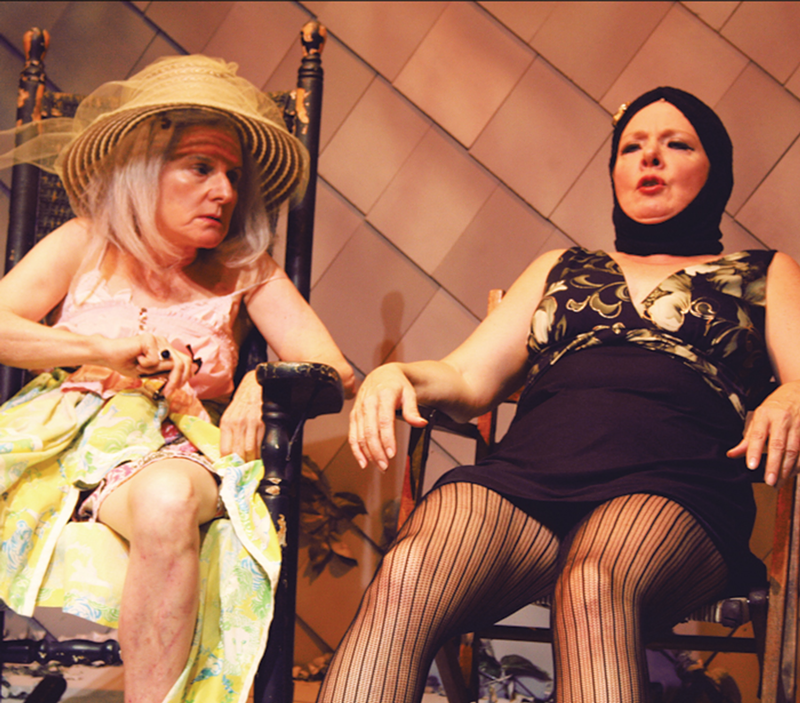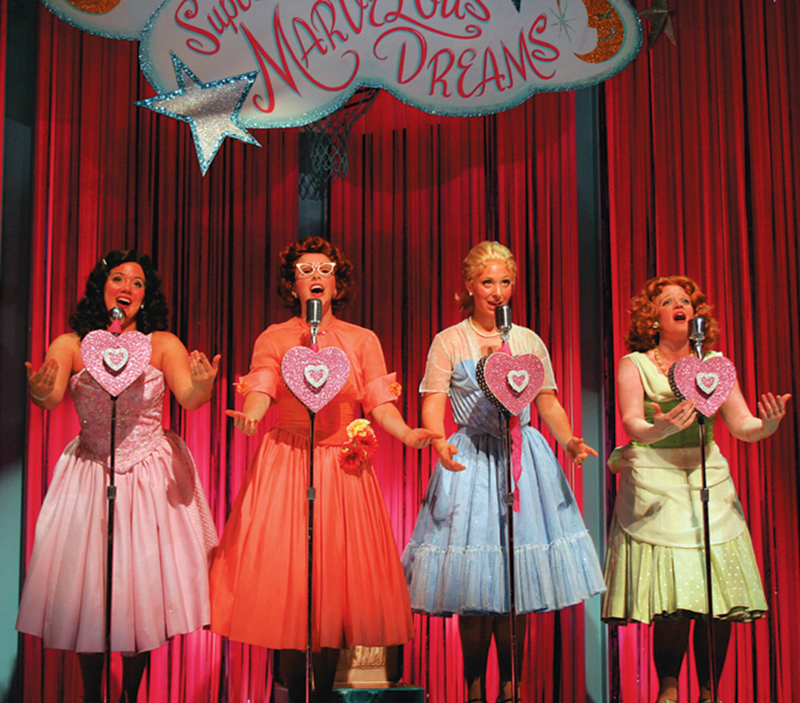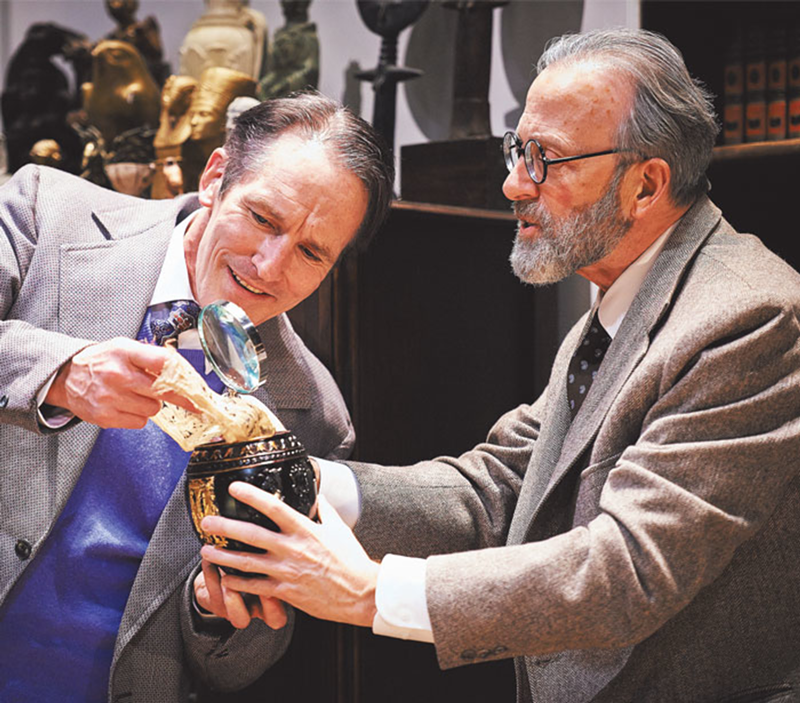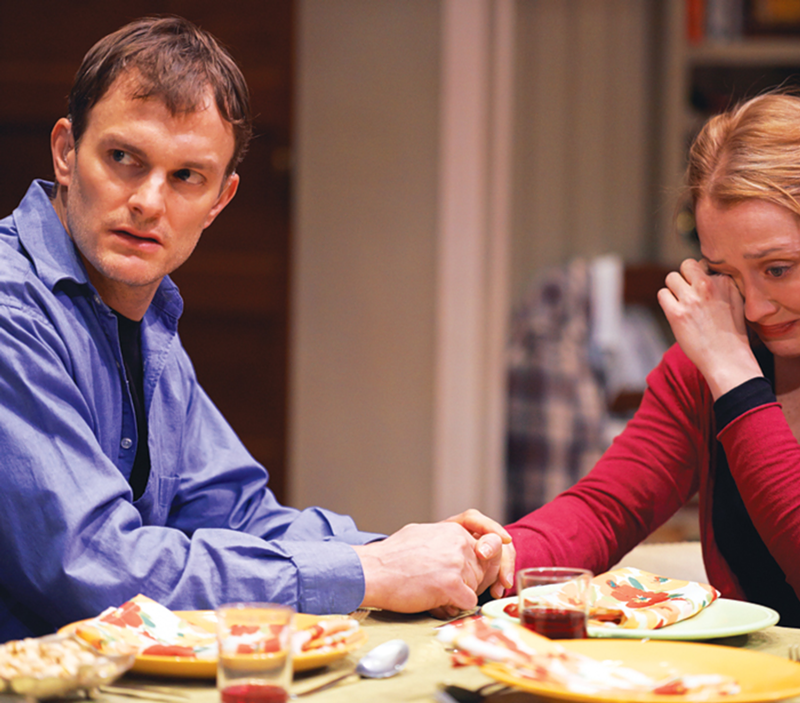This year marks Ensemble Theatre Cincinnati’s 30th anniversary. It was launched in 1986 to support local professional artists, driven by strong faith in the transformative power of the arts to create sustainable communities. Its founders, David A. White III and Jeff Seibert, pulled together a corps of local actors and aspiring theater professionals and assembled two seasons that were presented at Memorial Hall. After an extended search in 1988 by several dedicated board members, notably co-founders Ruth Sawyer and Mary “Murph” Taft Mahler, ETC’s permanent home was purchased at 1127 Vine St. in Over-the-Rhine. The late Sawyer and Mahler and their husbands remained fierce supporters for years.
White and Seibert established ETC in 1986 as a company for local professionals who were members of Actors’ Equity. They also recruited well-known playwrights to Cincinnati, including Edward Albee, who staged productions of two of his scripts at ETC — of Everything in the Garden (1991) and Seascape (1992) — then returned in 1993 to premiere a new work, Fragments. White’s seasons mixed contemporary and classic works, but sales were inconsistent. In 1994, Brad Fraser’s Poor Super Man — a controversial premiere featuring blunt language, male nudity and frank gay and transsexual content — garnered national attention, critical acclaim and lots of tickets sold. But it also drew legal scrutiny and condemnation from Hamilton County Sheriff Simon Leis, whose actions against the Contemporary Arts Center in 1990 around a photo exhibition by Robert Mapplethorpe made national headlines.
In the wake of severe financial problems, White and Seibert departed in mid-1995, and D. Lynn Meyers, a Cincinnati native who worked her way up at the Playhouse in the Park from an administrative assistant in 1977 to associate artistic director by 1989, was recruited for a three-month stint as interim artistic director. Although she had directed a well-received production of Tennessee Williams’ A Streetcar Named Desire in 1991, the board viewed her as triaging a company with serious debt and directed her to get things in order for a possible closing. An erstwhile search was underway for a new artistic leader, but once Meyers took hold, the board fell in love with her and convinced her to take the job. Those three interim months became two decades of passionate, committed leadership with no end in sight.
Meyers rearranged the 1995-1996 season, replacing two expensive shows with more economically feasible productions — Tom Fontana, a well-known writer and a friend of Meyers gave ETC A Slice of Buffalo, A Piece of Paris without charging for rights, and local composer David Kisor put some of his songs together for a piece of musical storytelling, Cars, Dogs, Money & the Moon. For the next few years, she says, “It was about trying to survive.”
During that time, Meyers sharpened the company’s mission to new works, positioning ETC as “Your Premiere Theatre.” She has relentlessly pursued plays that she felt Cincinnati audiences needed to see. In many cases, she gained permission to stage the first regional productions of award-winning shows that were hits in New York the previous season. That started with Warren Leight’s Side Man, the winner of the 1999 Tony Award. It opened ETC’s 1999-2000 season, an early sign that ETC was planting its artistic flag in OTR, despite the inner-city neighborhood’s dicey reputation. More than once, she has stated, “We strive to do plays that make sense for our region.”
Meyers’ theater began to flourish as Over-the-Rhine became more vibrant. She speaks enthusiasticly about productions that were steps in ETC’s growth and success.
SIDE MAN (September 1999): “You open up a script, you hear a voice and it’s so clear,” Meyers says. “That’s what happened for me with Side Man. I could hear it; I could feel it. It went through my bones. It won the Tony, and Warren gave it to us without knowing us. He came to Cincinnati and made the connection with our theater. That’s what you want with a playwright — a beginning and a middle — and you don’t want an end. 1999 was a pivotal year; everything was kicking into gear and this play said, ‘Take us seriously.’ ” In 2000, Leight offered Meyers the premiere of his Side Man sequel, Glimmer, Glimmer and Shine. Early in 2003, he came to Cincinnati and worked with Meyers as she staged the world premiere of another script, James and Annie.
In April 2001, ETC was at the epicenter of racial unrest following the shooting of Timothy Thomas, a 19-year-old unarmed African American, by a Cincinnati police officer. It happened just blocks from ETC. “I had said it couldn’t get worse,” Meyers recalls. “But it got worse.” Some of ETC’s board members thought the theater should move, perhaps to Covington, but Meyers was adamant about remaining in Over-the-Rhine and continuing to offer shows that were timely and meaningful to the city.
HEDWIG AND THE ANGRY INCH (May 2001): Meyers’ May 2001 show was John Cameron Mitchell’s Hedwig and the Angry Inch, an off-Broadway Rock musical about a singer passing as female after a botched sex-change operation. With a band of all-star Cincinnati rockers and gangly Todd Almond from the University of Cincinnati’s College-Conservatory of Music, it became an immense hit for ETC. “If we didn’t do Hedwig, we would have just closed. If we didn’t do something spectacular, we said we were done. Well, Hedwig was spectacular. Everybody loved it. We did it again in 2003. We’ll do it again someday — if we can, when the rights are available. (The show is presently running again on Broadway.) Todd came back and did I Am My Own Wife for us in 2005, and he’s gone on to a great career in New York City; he performed Kansas City Choir Boy with Courtney Love earlier this year.”
THE GUYS (September 2002): “A year after 9/11 we produced Anne Nelson’s play about a New York City fire captain eulogizing four of his team who died at the World Trade Center. I had a friend who died there. When I read it, I had no idea that the playwright’s brother was here in Cincinnati. I harassed her to get permission to do the show. She finally gave me the script for our 2002 season — she said I was ‘intolerably annoying.’ I’ve been proud of that ever since. It was another pivotal moment for ETC.”
THE EXONERATED (September 2003): “This was an important play for me because of my belief in lives that count. The Ohio Innocence Project, in its infancy, was really gearing up. I learned more from Lois Rosenthal (the late Rosenthal was a moving force behind OIP), and we brought attorney Barry Scheck, and TV host Jerry Springer came in the night before we opened for a public conversation that opened up such a dialogue. Ten chairs onstage — it was one of the most inspired sets Brian Mehring has designed. The actors were there when the audience came in — isolated in those ‘cells.’ It was one of the most riveting moments on our stage. That show was a big deal.”
I AM MY OWN WIFE (March 2005): “I had to be annoying again to get Doug Wright’s script. He put me in touch with his producer, and I just hunted that poor man. Every week I’d call him, telling him, ‘I’m not announcing my season until you give it to me,’ even though it was still running on Broadway. I knew it was something extraordinary. We got it the day the show won the 2004 Tony Award. I was relentless, but not just because I wanted it. We needed that play here in Cincinnati. Our city needed to talk about gender and identity. That’s why we did it.”
GREY GARDENS (September 2008): “We had to do this show, another one by Doug Wright — I thought, ‘I have to follow this man around and collect everything he does!’ We had the actors — Neva Rae Powers and Dale Hodges, who can play anything, and we integrated our music director Scot Woolley into the relationship. I remember (designer) Brian Mehring’s face when I told him we were doing it. He and (design associate) Shannon Lutz said it was impossible. God bless them, we found a way to put it in that theater. I don’t know how they did it. It was also critical when we did that one, too. Our subscriptions were on an upswing, and we needed something that was going to keep us swinging. Grey Gardens was a recent hit that got a lot of press. Our cast, Doug Wright, a big title — that really helped us that year.”
THE MARVELOUS WONDERETTES (May 2010): “Roger Bean’s shows about girl singers in the ’50s and ’60s made a big difference for us for several seasons. (In addition to the original, Meyers presented Winter Wonderettes in 2011, Life Could Be A Dream in 2012 and Marvelous Wonderettes: Caps & Gowns in 2013.) My audience is smart, so I wondered if they would think these shows were stupid. So I decided to play them really, really honest, not camping the story up, not making fun of them. We took everyone back to what it was like to be 17 and 27. If you go to the core of those friendships, you cannot lose with that show. Those four actors were so different — Denise Devlin was a (Northern Kentucky University) grad; Mia Gentile came from CCM; Sara Mackie is a Wright State alum; and Brooke Rucidlo had been doing community theater — but they had just the right chemistry. It was innocence onstage with the greatest music.”
NEXT TO NORMAL (September 2011, reprised in June 2012): “I read the script about a schizophrenic mother without listening to the Rock & Roll music. I couldn’t stop crying. I related to every character in it. Then I heard the music, and I couldn’t breathe. When I told scenic designer Brian about this one, he just became electrified. He felt that show and created one of the most astonishing sets we’ve ever had on our stage.”
FREUD’S LAST SESSION (January 2013): “Michael Haney kept advocating this one. (Haney, the former associate artistic director at the Cincinnati Playhouse, has been a frequent guest director at ETC. He returns to stage Grounded in 2016.) I wasn’t so sure, but when he said he could cast Bruce Cromer as C.S. Lewis and Barry Mulholland as Freud, I thought it could really work. Well, I couldn’t believe it. It was so popular we could still be running that show! It was exactly what we needed at exactly the right time. That burst of sales lifted us for the whole season — it exploded financially. Michael’s direction was sublime. He loved that play, he loved those actors and, oh my God, what he did was magnificent!”
BLACK PEARL SINGS (March 2013): “I really wanted to do this play. I didn’t know anything about African-American Jews — that’s why I really liked it. I had it on my shelf for maybe four years. I finally said, ‘We’re doing this play.’ Torie Wiggins was on my mind to play Pearl. She earned her Equity card with that show, and she was a good match with Annie Fitzpatrick. The play is a strong woman’s story, and an interesting look at race from a woman’s point of view.”
TRIBES (January 2014): “I’m still learning how that show resonated. I asked an acquaintance at St. Rita School for the Deaf to read the script because I wanted to know if it was genuine. I was taking a risk — the script has strong language. She sent me a huge email about why it was authentic and necessary. We offered many signed performances, so deaf people from all over — Louisville, Chicago, Indianapolis — came to see it. They had never been here before, never felt welcome in a theater before they came.”
A Home — and a launching pad — for theater professionals
ETC has had another major impact on local theater. The vision of those who launched it — to give work to local professionals — has been realized. Initially, the company used an “ensemble” — actors who performed in most productions. Once Meyers arrived, she reached out more broadly for her ETC casts, as well as for films shot locally employing her as a casting director. (She used approximately 80 locals for the 2014 shoots of Carol and Miles Ahead, to be released this fall.)
Today, many actors make a living working locally. Dale Hodges, one of Cincinnati’s most admired actors, has been on ETC’s stage many times, as has Bruce Cromer (Ebenezer Scrooge at Cincinnati Playhouse since 2005), who teaches theater at Wright State University. Drew and Sherman Fracher, a married pair, have routinely found work at ETC as actors, and Drew as a stage and fight director. ETC has enabled and cultivated the careers of others including Annie Fitzpatrick and Torie Wiggins, who have worked at numerous local theaters. It’s not just actors: Local playwright Joe McDonough and composer David Kisor have created annual fairytale holiday musicals for ETC that have been performed elsewhere.
ETC’s gift to local theaters goes further, thanks to two decades of intern and apprentice training. Many young artists began their professional theater careers at ETC — including Jasson Minadakis, one of the founders of Cincinnati Shakespeare Company, and Brian Isaac Phillips, Cincy Shakes’ current artistic director. (Phillips still acts occasionally at ETC and Know Theatre.) In fact, actors, directors and educators who started at ETC are everywhere: Leah Baker, Michael Bath, Linnea Bond, Amy Burgess, Jason Burgess, Burgess Byrd, Michael Carr, Lisa DeRoberts, Jared Doren, Jared Earland, Brian Griffin, Becca Howell, Lauren LaRoux, Sara Kinney, Sarah Mackie, Andrew Maloney, Nathan Neorr, Ben Ranaan, Spencer Smith, Leah Strasser, Tess Talbot, Eric Weisheit, Becca Whateley, Daniel Winters and Tamara Winters.
ETC’s 30-year legacy of new plays and work onstage has meant sustenance for Cincinnati’s local theater community.
Ensemble Theatre Cincinnati 2015-2016 Season
Luna Gale by Rebecca Gilman: Sept. 8-27
Buyer & Cellar by Jonathan Tolins: Oct. 13-Nov.1
Cinderella by Joseph McDonough (book), David Kisor (lyrics) and Fitz Patton (music): Dec. 2-Jan. 3
Grounded by George Brant: Jan. 26-Feb. 14
Annapurna by Sharr White: March 22-April 10
Violet by Brian Crawley (book and lyrics) and Jeanine Tesori (music), based on “The Ugliest Pilgrim” by Doris Betts: May 3-22

